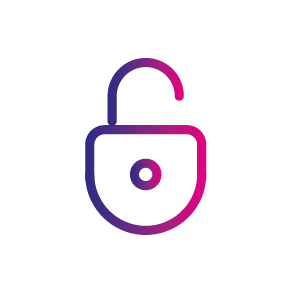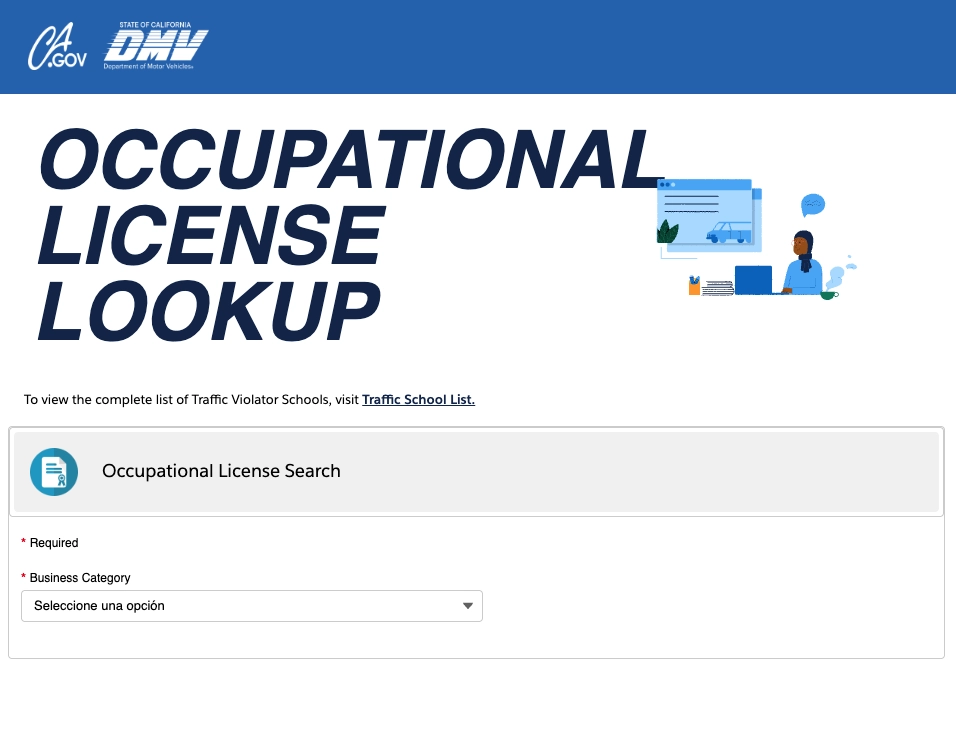California DMV Occupational License Guide
The California Department of Motor Vehicles (DMV) issues Occupational Licenses (OL) to businesses and individuals engaged in vehicle-related industries. In simple terms, an OL is a special license you must obtain if you want to legally operate certain vehicle businesses (like car dealerships or registration services) in California. The DMV’s Occupational Licensing program exists to protect consumers by ensuring such businesses meet state standards.
CA DMV Occupational License
Below we’ll explain who needs an OL, the different types of OLs (with a focus on auto dealers and registration services), and how to get your California DMV Occupational License.

Who Needs an Occupational License?
Vehicle Dealers (Auto Dealers), Registration Services, Vehicle Lessors/retailers, vehicle dismantlers, Driving Schools and Traffic Schools, Manufacturers / Distributors / Transporters all must have an Occupational License.

Types of Occupational Licenses?
Vehicle Dealer License (auto dealer), Registration Service License, Vehicle SalesPerson License, Vehicle Lessor-Retailer License, Vehicle Transporter License, Vehicle Representative License, and others like dismantlers, agents, etc.

How Expert Helps with your OL License
Being a partner with Expert, means support from day one. Whether you have received your OL license already or not, Expert will assist in securing your Occupational License through the CA DMV. We are here to help.
California DMV Occupational License: What It Is and How to Get One
Who Needs a California DMV Occupational License?
You need an ca dmv occupational license if you plan to engage in various vehicle industry roles or services. California law requires an occupational license for any person or business that sells vehicles requiring registration or offers certain vehicle-related services. In practical terms, many types of vehicle businesses are regulated and must be licensed by the DMV. Here are some common examples of who needs an OL:
Vehicle Dealers (Auto Dealers): Anyone who sells new or used vehicles for retail or wholesale must have a vehicle dealer license. This includes car dealerships (new auto dealer license or used car lots).
- Registration Services: Businesses that assist the public with DMV paperwork (vehicle registrations, title transfers, renewals, lien sales, etc.) for a fee must be licensed as a registration service.
Vehicle Lessors/Retailers: Companies that lease vehicles and then sell those previously leased or rental vehicles to the public need a lessor-retailer license. (For example, a rental car company selling its used rental cars must have this ca dmv occupational license, unless sales are only to the original lessee or certain exempt buyers.)
Vehicle Dismantlers: Salvage yards or individuals who buy vehicles to dismantle and sell parts must hold a dismantler license (not our primary focus here, but it’s another OL category).
Driving Schools and Traffic Violator Schools: Operators of driver training or traffic school programs also require OLs.
Manufacturers, Distributors, Transporters, etc.: Vehicle manufacturers and distributors (e.g. an RV manufacturer or car maker’s rep) need OLs, as do transporters who deliver vehicles for owners or dealers. Even individual roles like salespersons at a dealership require their own OL (vehicle salesperson license)
n summary, if your business involves selling or handling vehicles or DMV transactions for the public, you will likely need a California DMV Occupational License. The DMV provides a detailed list of product types that require an OL, which essentially covers all vehicles that must be registered or officially identified (cars, trucks, motorcycles, ATVs, trailers, RVs, etc.). Only a few categories of equipment (like certain off-road or specialized vehicles) are exempt from OL requirements.
Types of California DMV Occupational Licenses
The DMV’s Occupational Licensing program covers a range of license types. Below are the major OL categories, with an emphasis on those relevant to new businesses entering the vehicle industry. Understanding the differences between these license types is important so you apply for the correct one (or combination) for your operation.
Vehicle Dealer License (Auto Dealer License): This license is required to sell vehicles in California, whether new or used. Dealers can sell retail to the public and/or wholesale to other dealers (depending on license type). Getting a dealer license involves significant requirements: you must have an established place of business (with an office and, for retail, a display lot meeting size and signage rules), complete a dealer training course if dealing used vehicles, pass a DMV administered exam (for used/wholesale dealers), submit a detailed application with supporting documents, and pay various fees. Dealers are also required to post a surety bond of $50,000 as financial security. After application approval, DMV will inspect your dealership location for compliance (office setup, records, signage, etc.) before granting the license. Once licensed, a dealer can buy, sell, or lease vehicles and is eligible to participate in DMV’s electronic Business Partner Automation program to issue plates and registrations on-site.
Registration Service License: A registration service is a business that processes vehicle registration and title transactions for the public (typically for a service fee) instead of the customer going to the DMV. If you plan to assist with tasks like filing registration applications, transferring titles, renewals, or processing lien sale and dismantler paperwork, you must get a registration service OL. Compared to dealers, registration services do not sell vehicles – they handle DMV paperwork only. To qualify, you need a fixed business location (an office accessible to the public) and a surety bond (usually $25,000 for a registration service) as a financial guarantee, similar to a dealer’s bond. The application process requires completing the DMV’s forms, submitting fingerprints for a background check, and paying an application fee (approximately $150). The DMV will also inspect a registration service’s office to ensure secure handling of DMV documents and adherence to record-keeping requirements. Once licensed, a registration service can act as a “private DMV office” for customers – useful for those looking to become a Second-Line Business Partner under DMV’s BPA program (more on this later).
Vehicle Salesperson License: This is a license for individuals, not businesses. Anyone who will sell vehicles or finance/insurance products at a dealership needs a salesperson license in California. For new entrepreneurs, this matters if you’re opening a dealership – each of your sales staff must be licensed. The salesperson license requires a background check and an application with the DMV, but no separate bond (salespeople work under the dealer’s bond). It’s essentially an OL ID card that authorizes a person to act as a salesperson under a licensed dealer. A salesperson cannot lawfully sell vehicles unless they hold this license and work for a licensed dealer.
Vehicle Lessor-Retailer License: This is a specific type of dealer license for rental car companies or leasing companies that sell their used vehicles. If your business will lease vehicles and later sell the off-lease or rental vehicles to the public, you need a lessor-retailer ca dmv occupational license unless sales are only to certain exempt parties (like the person who leased the car, a business buyer, or a government agency). Lessor-retailers have similar requirements to dealers (bond, location, etc.) and in fact use the same application process as dealers, but the license is categorized differently in DMV records.
Vehicle Transporter License: A transporter license is needed if you move or deliver vehicles that are not yet registered on behalf of others. For example, a business that transports vehicles between dealerships, from ports to dealers, or for private owners (commonly using special “transport” plates) must hold this OL. Dealers who employ their own drivers to swap inventory might use their dealer plates for transport, but an independent transport company or individual requires a transporter license. Application requirements include an OL application, a bond (bond amount is typically $15,000 for transporters), and a designated place of business.
Vehicle Representative License: This license applies if you are hired by a vehicle manufacturer or distributor to work with their franchise dealers. For instance, a district manager who oversees dealerships or solicits new franchisees for a manufacturer must have a representative license. While not directly relevant to someone starting their own dealership or reg service, it’s part of the OL family. The representative license process involves a background check and fees (application fee of $50 plus $1 family support fee), but it does not require a bond or a business location since it’s tied to your employment with a manufacturer/distributor.
Other OL Types: There are additional occupational licenses (e.g. vehicle dismantler, distributor, manufacturer, driving school owner, traffic violator school, vehicle verifier, vessel agent, etc.), but the ones above are the most pertinent for typical new business partners in the vehicle industry. No matter the type, remember that all ca dmv occupational license are overseen by DMV’s Occupational Licensing Section, and you must keep your license current and in good standing to operate legally.
How to Get Your Occupational License in CA (Step-by-Step)
Getting your California DMV Occupational License involves several steps. The process is now largely online through the DMV’s online Occupational Licensing portal, but you will need to prepare documents and meet certain requirements before approval. Below is a general guide on how to apply for an OL – whether it’s a dealer license, registration service license, or other type:
Determine the License Type You Need: Clearly identify which OL category fits your business. For example, if you will sell vehicles, apply for a Vehicle Dealer License; if you’ll only handle registration paperwork for customers, apply for a Registration Service License. (When in doubt, the DMV’s online system will list types under “My Licenses” – choose the appropriate one. You can also refer to DMV’s product list to confirm that your business activity requires an OL.)
Meet Preliminary Requirements: Ensure you meet any prerequisites for that license. For instance, used auto dealers must complete a Dealer Education Program course and pass a dealer exam. All owners/principals will need to pass a background check (Live Scan fingerprinting) for any OL type. You also need to secure an appropriate business location that meets DMV’s criteria (e.g. a dealership office and lot, or a commercial office for a reg service). The business site must comply with local zoning and will be inspected by DMV, so set it up with the required signage, records storage, etc., before inspection.
Obtain a Surety Bond: Most ca dmv occupational license types require a surety bond as financial security. You must purchase a bond from an authorized surety company and keep it active at all times – a lapse can cancel your license. The bond amount varies by license: for example, auto dealers need a $50,000 bond and registration services need a $25,000 bond. The bond serves to protect the public (it can pay out if a dealer or service causes financial harm through fraud or failure to pay fees). You’ll submit proof of the bond (or DMV’s bond form) with your application. Tip: The bond must stay in effect continuously; DMV will suspend or cancel your OL if the bond is cancelled or expires.
Prepare Your Application Documents: The DMV provides specific forms for each license type (often in a packet). Generally, you will need to complete an Application for Original Occupational License form (for dealers this is form OL 12; for reg services, form OL 6016, etc.), and related documents like personal history questionnaires for each owner, proof of completion of any required courses/tests, and maybe a property use verification form for your business location. Each person listed on the license (owners, partners, corporate officers) must submit a Live Scan fingerprint receipt to DMV for the background check. Compile all required paperwork as listed in DMV’s application checklist for your license type.
Submit the Application Online: California now lets you apply for your OL online via a DMV portal. You’ll first create or log in to your personal MyDMV account, then access the Occupational Licensing section. The system will walk you through entering your information and uploading documents. (If needed, you can still mail in forms, but online submission is faster.) Pay the required application fees when you apply – fees are non-refundable and typically range from around $150 to $175 for most original OL applications (e.g. $175 for a dealer application, $150 for a reg service, plus small additional fees like a $1 family support program fee). The online system allows credit/debit payment for fees due.
Pass DMV Inspection (for Businesses): After your application is reviewed and preliminarily approved, the DMV will contact you to schedule an inspection of your business location. An OL inspector will visit to verify you meet all requirements. For example, for a dealership they will check your office, display area, signage, and records to ensure they meet the legal standards. For a registration service, they’ll check you have a secure workspace and proper record-keeping for transactions. You’ll schedule this inspection through DMV’s online scheduling system once you’re notified. Successful inspection is the last big step before licensure.
Receive Your Occupational License: If all the above steps are satisfied (application approved, background checks clear, fees paid, bond on file, and location passes inspection), the DMV will issue your Occupational License. You will typically receive an OL certificate or license document and any special supplies or plates (e.g. dealer plates, if you requested them) once fully licensed. Congratulations – you can now legally operate your vehicle industry business in California! Remember that holding an OL means your business must continually follow DMV rules. Your license will need periodic renewal (usually annually or biennially, depending on the type), and DMV can re-inspect or audit compliance at any time.
Important: Maintaining your OL in good standing is crucial. This means keeping your bond current (renew it before expiration; any lapse can result in automatic license cancellation), renewing your license on time, and adhering to all DMV regulations in your operations. Any changes like an address change or adding a branch location must be reported to DMV and may require an update to your license. Operating without a required OL or under a cancelled/suspended OL can lead to hefty fines and legal action, so take the licensing requirement seriously.
Tips for New Dealers and Registration Services
Plan for the Bond and Insurance: As mentioned, a surety bond is mandatory for dealers, registration services, lessor-retailers, and others. Contact an insurance or bonding company early to get your bond in place. Dealers need a $50k bond; registration services $25k. The cost you pay for the bond (premium) is a fraction of that (based on your credit). Also, ensure you have any required liability insurance (e.g. dealers should have garage liability insurance, though it’s separate from DMV’s OL process).
Complete Required Education/Exams: If you’re a new or used auto dealer, block out time to take the 6-hour dealer pre-licensing class (from a DMV-approved provider) and schedule your dealer exam at DMV. You must pass the exam before your application is approved. Study the DMV Dealer Handbook (Vehicle Industry Procedures Manual) to prepare. Registration services currently don’t have a mandatory course, but you should become familiar with DMV registration procedures.
Prepare Your Location: DMV inspectors will verify that your business location complies with all rules. For a dealership, you generally need: an office (permanent structure) with desk, files, etc.; a display lot (for retail dealers) of adequate size for the vehicles you sell; a permanent sign with letters at least 2-3 inches high, visible from the street, showing your business name; posted hours of operation; and proper records and books of account. A registration service office should likewise have a secure work area, lockable storage for sensitive documents, and possibly a sign stating it’s a registration service. Taking photos of your location (interior and exterior) is often required with the application, and they should match what the inspector will see. Address any deficiencies before the inspection to avoid delays.
Understand Employee Licensing: If you will hire staff, ensure anyone acting in a licensed capacity has the proper credential. For example, as a dealer, your salespeople must each have a vehicle salesperson OL (they’ll need to apply for that separately). There are also OL requirements for dealer management: a person cannot act as a dealer agent (buying at auction, etc.) without being an owner, officer, or licensed salesperson. Make sure to factor these into your timeline – new salespeople should submit their applications and fingerprints promptly so they’re approved by the time you open your dealership.
Know the Business Partner Automation (BPA) Program: Many new dealers and registration services join the DMV’s BPA program as Second-Line Business Partners so they can process registration and title transactions in-house. Note that to qualify for the BPA program, you must already hold the appropriate Occupational License for your business type. For example, a dealer needs its dealer OL, a registration service needs its ca dmv occupational license, etc., in order to apply for BPA. The good news is that your existing OL and bond suffice for BPA – the DMV does not require a separate BPA bond or additional license if you’re an OL holder in good standing. So, getting your OL is the first big step to becoming a full service provider (the BPA application comes next, through a First-Line Service Provider contract). Keep copies of your OL documentation, as you’ll need to show proof of licensure when signing up with a First-Line Provider or applying to BPA.
Conclusion
Obtaining a California DMV Occupational License is a must for anyone entering the vehicle sales or service industry – whether you’re opening a car dealership or starting a registration assistance business. The OL ensures you meet state standards and legal requirements to operate, which in turn protects consumers and upholds the integrity of vehicle transactions.
In summary, to get your OL you should determine the correct license type, fulfill all prerequisites (training, bond, etc.), submit a thorough application via the DMV’s online system, and pass the DMV inspection. Once you receive your occupational license, you can confidently launch your business – and even take advantage of programs like BPA to streamline your operations. Always remain compliant with OL rules: maintain your bond, renew your license on time, and follow all regulations. Having an OL not only keeps you legal, but it also signals that your business “meets the standards set by California law” and has been vetted by the DMV. Good luck with your new venture in California’s vehicle industry!


